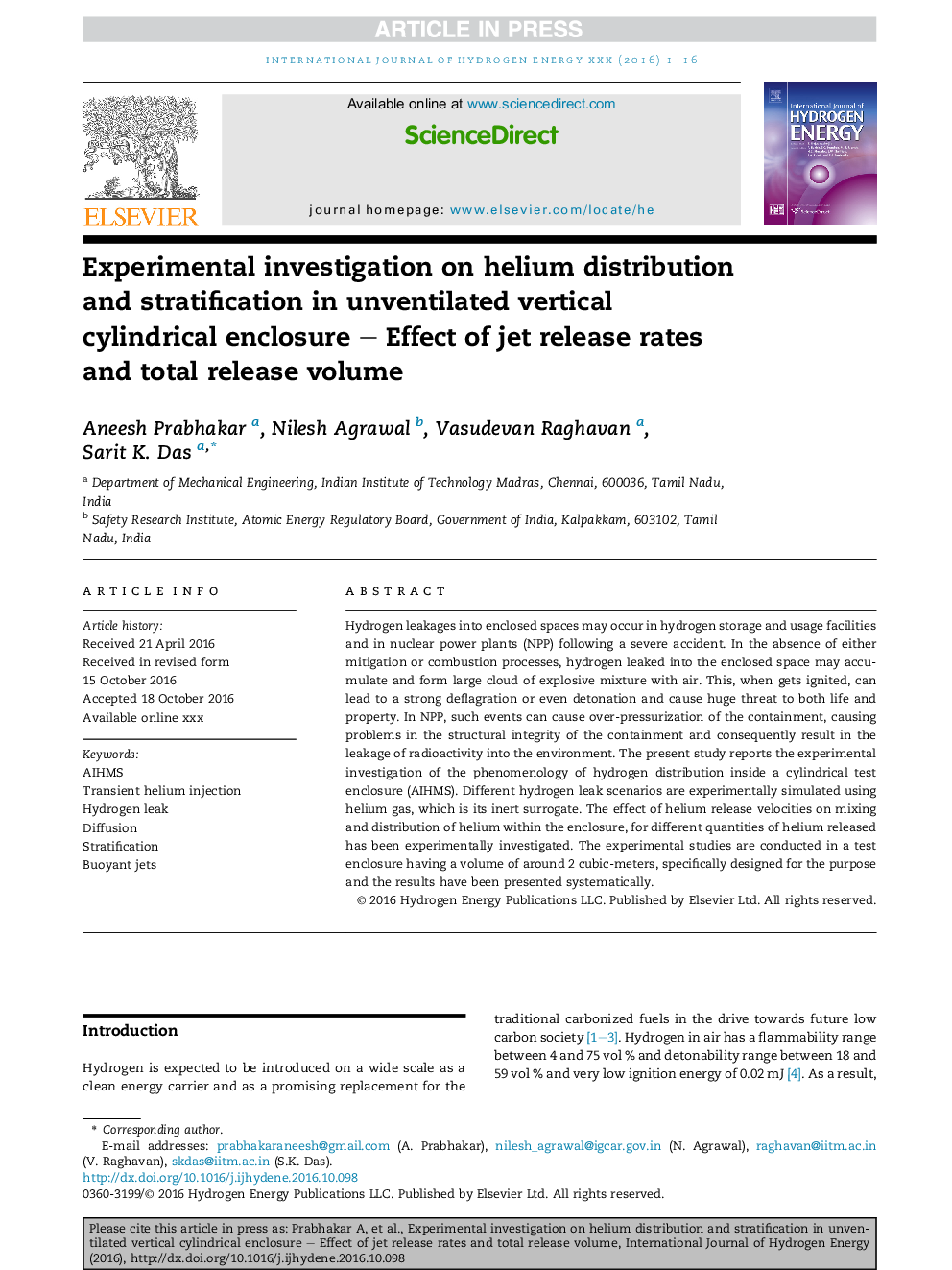| Article ID | Journal | Published Year | Pages | File Type |
|---|---|---|---|---|
| 5145845 | International Journal of Hydrogen Energy | 2016 | 16 Pages |
Abstract
Hydrogen leakages into enclosed spaces may occur in hydrogen storage and usage facilities and in nuclear power plants (NPP) following a severe accident. In the absence of either mitigation or combustion processes, hydrogen leaked into the enclosed space may accumulate and form large cloud of explosive mixture with air. This, when gets ignited, can lead to a strong deflagration or even detonation and cause huge threat to both life and property. In NPP, such events can cause over-pressurization of the containment, causing problems in the structural integrity of the containment and consequently result in the leakage of radioactivity into the environment. The present study reports the experimental investigation of the phenomenology of hydrogen distribution inside a cylindrical test enclosure (AIHMS). Different hydrogen leak scenarios are experimentally simulated using helium gas, which is its inert surrogate. The effect of helium release velocities on mixing and distribution of helium within the enclosure, for different quantities of helium released has been experimentally investigated. The experimental studies are conducted in a test enclosure having a volume of around 2 cubic-meters, specifically designed for the purpose and the results have been presented systematically.
Related Topics
Physical Sciences and Engineering
Chemistry
Electrochemistry
Authors
Aneesh Prabhakar, Nilesh Agrawal, Vasudevan Raghavan, Sarit K. Das,
